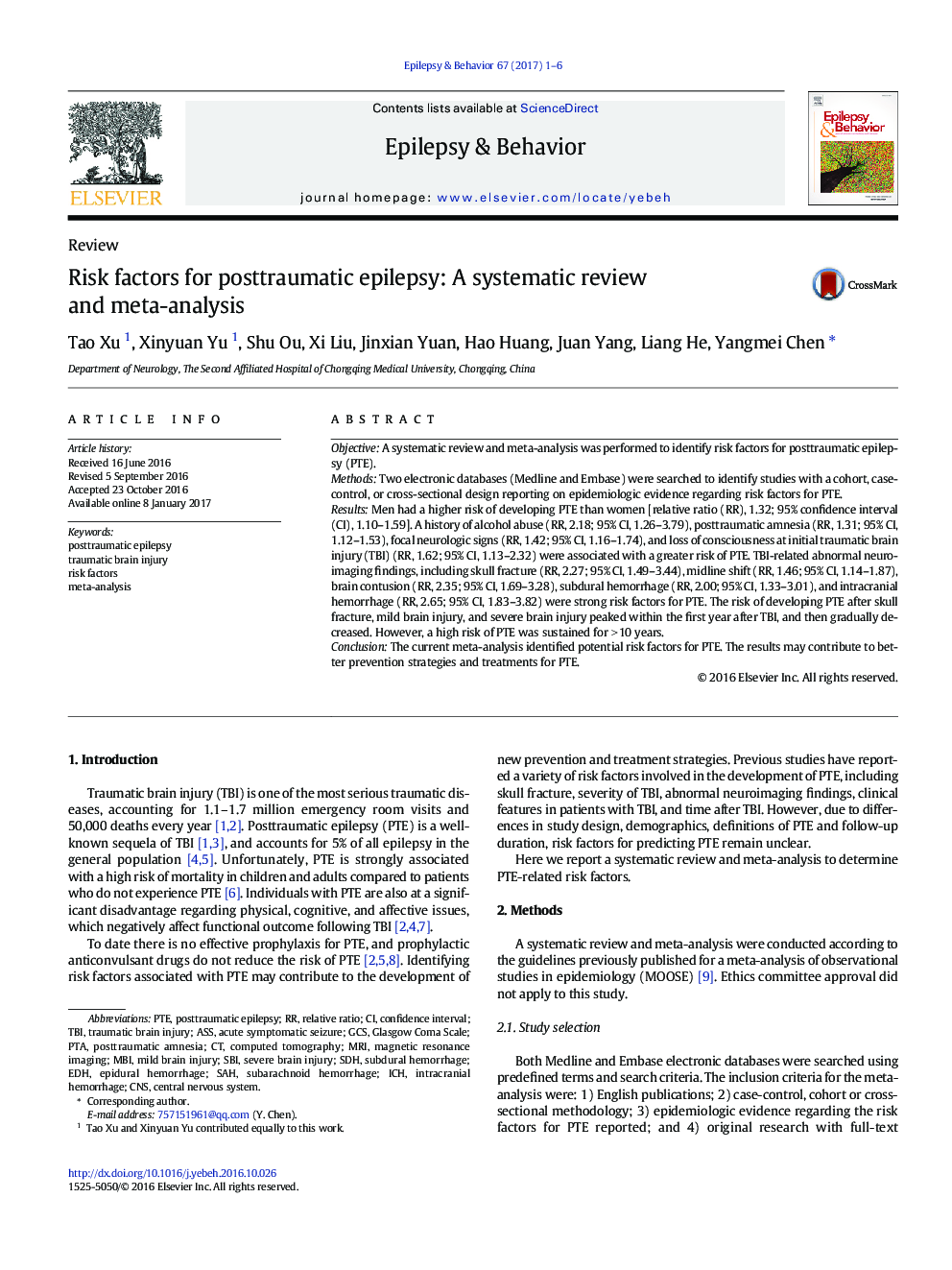| کد مقاله | کد نشریه | سال انتشار | مقاله انگلیسی | نسخه تمام متن |
|---|---|---|---|---|
| 5628464 | 1579825 | 2017 | 6 صفحه PDF | دانلود رایگان |
- Key risk factors for posttraumatic epilepsy (PTE) have been identified.
- The prevalence of PTE in patients with traumatic brain injury (TBI) is 15%.
- The risk of developing PTE peaks within the first one year after TBI.
- The risk of PTE is maintained at a high level for >Â 10Â years after TBI.
ObjectiveA systematic review and meta-analysis was performed to identify risk factors for posttraumatic epilepsy (PTE).MethodsTwo electronic databases (Medline and Embase) were searched to identify studies with a cohort, case-control, or cross-sectional design reporting on epidemiologic evidence regarding risk factors for PTE.ResultsMen had a higher risk of developing PTE than women [relative ratio (RR), 1.32; 95% confidence interval (CI), 1.10-1.59]. A history of alcohol abuse (RR, 2.18; 95% CI, 1.26-3.79), posttraumatic amnesia (RR, 1.31; 95% CI, 1.12-1.53), focal neurologic signs (RR, 1.42; 95% CI, 1.16-1.74), and loss of consciousness at initial traumatic brain injury (TBI) (RR, 1.62; 95% CI, 1.13-2.32) were associated with a greater risk of PTE. TBI-related abnormal neuroimaging findings, including skull fracture (RR, 2.27; 95% CI, 1.49-3.44), midline shift (RR, 1.46; 95% CI, 1.14-1.87), brain contusion (RR, 2.35; 95% CI, 1.69-3.28), subdural hemorrhage (RR, 2.00; 95% CI, 1.33-3.01), and intracranial hemorrhage (RR, 2.65; 95% CI, 1.83-3.82) were strong risk factors for PTE. The risk of developing PTE after skull fracture, mild brain injury, and severe brain injury peaked within the first year after TBI, and then gradually decreased. However, a high risk of PTE was sustained for >Â 10Â years.ConclusionThe current meta-analysis identified potential risk factors for PTE. The results may contribute to better prevention strategies and treatments for PTE.
Journal: Epilepsy & Behavior - Volume 67, February 2017, Pages 1-6
